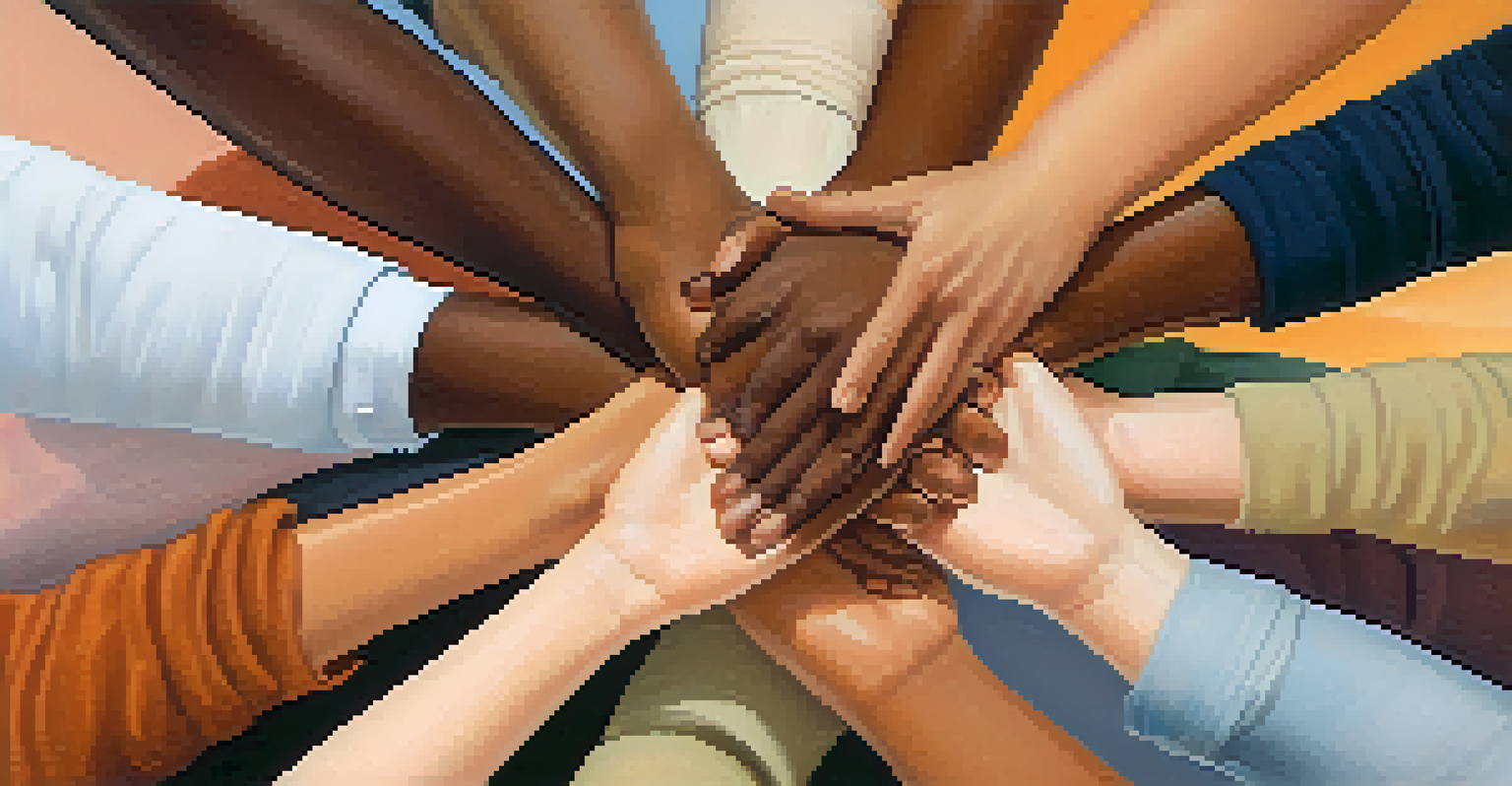Recognizing Signs of Domestic Violence: What to Look For

Understanding Domestic Violence: What It Really Means
Domestic violence isn't just physical; it encompasses emotional, verbal, and financial abuse. It’s crucial to recognize that anyone can be a victim, regardless of age, gender, or background. By understanding what domestic violence entails, we can better identify it in our communities.
The greatest weapon against stress is our ability to choose one thought over another.
Often, the signs of domestic violence are subtle and can easily be overlooked. For instance, a partner may express extreme jealousy or control over their significant other's activities. These behaviors might seem harmless initially but can escalate into more severe forms of abuse.
Recognizing the broader definition of domestic violence helps create a more inclusive conversation about it. This awareness is vital as it encourages friends, family, and community members to speak up and offer support to those who may be suffering in silence.
Physical Signs: What to Watch For
One of the most evident signs of domestic violence is physical injury. This can manifest as unexplained bruises, cuts, or frequent visits to the doctor. If someone you know often seems to have injuries that they can't explain, it might be a cause for concern.

Additionally, pay attention to changes in their appearance or demeanor. Victims might withdraw from social activities, wear clothing that conceals injuries, or appear anxious and fearful around their partner. These behavioral shifts can indicate that something is wrong.
Domestic Violence Has Many Forms
Domestic violence includes physical, emotional, and financial abuse, affecting anyone regardless of their background.
While physical signs are alarming, it's essential to approach the situation delicately. A gentle conversation can provide the victim with an opportunity to share their experiences without feeling judged or pressured.
Emotional and Psychological Signs to Recognize
Emotional abuse can be just as damaging as physical violence and is often harder to spot. Look for signs of anxiety, depression, or low self-esteem in someone you care about. If they frequently express feelings of worthlessness or fear their partner's reactions, these could be red flags.
You can't heal what you don't acknowledge.
Another indicator is the victim's changing behavior around their partner. They may seem overly compliant, afraid to express their opinions, or excessively apologetic. This reaction often stems from a desire to avoid conflict or to keep the peace.
Creating a safe space for someone to talk about their feelings can make a significant difference. It shows that you care and are willing to listen, which can empower them to seek help.
Control and Manipulation: Recognizing Red Flags
Control in a relationship can manifest in many ways, such as dictating what someone wears, who they can see, or how they spend their time. If you notice a friend is constantly checking in with their partner or seems to have lost their independence, it might be a sign of manipulation.
Another form of control is financial abuse, which can include restricting access to money or controlling all financial decisions. This often leaves victims feeling trapped and unable to escape their situation.
Recognizing Signs of Abuse
Physical injuries, behavioral changes, and signs of manipulation are key indicators to watch for in potential victims.
Understanding these signs is crucial for identifying unhealthy relationships. If you suspect someone is in a controlling dynamic, approach the topic with empathy and concern, encouraging them to explore their options.
Isolation: A Common Tactic of Abusers
Isolation is a common tactic used by abusers to gain control over their victims. If someone you know has stopped engaging with friends or family, it might be a sign that their partner is trying to isolate them. This can create a sense of dependency on the abuser.
Additionally, if the individual seems to have a limited support system or expresses fear of their partner's reactions to social interactions, this could indicate a troubling situation. Isolation can lead to feelings of loneliness and despair, making it harder for victims to seek help.
Recognizing the signs of isolation can empower you to reach out. Encouraging a victim to reconnect with their support network can be a vital step in their journey toward recovery.
Recognizing the Impact of Substance Abuse
Substance abuse can complicate situations involving domestic violence, both for victims and perpetrators. If you notice that someone is using drugs or alcohol more frequently, it may be a coping mechanism for dealing with abuse or stress.
Conversely, abusers may use substances to justify their violent behavior, claiming that they were 'under the influence' during incidents. This can create a cycle of abuse that is difficult to escape.
Support Resources are Available
There are numerous resources, including hotlines and support groups, that can provide crucial help to those experiencing domestic violence.
Addressing substance abuse alongside domestic violence is essential for comprehensive support. Encouraging individuals to seek help for both issues can lead to a healthier, safer environment.
How to Approach Someone You Suspect is a Victim
If you suspect someone is experiencing domestic violence, approaching them with care and compassion is critical. Start by creating a safe space where they feel comfortable sharing their experiences. This can help establish trust and encourage them to open up.
Use open-ended questions to allow them to express themselves without feeling pressured. Phrases like 'I’ve noticed you seem different lately; is everything okay?' can invite conversation without placing blame or making assumptions.

Remember that it's essential to listen without judgment and validate their feelings. Letting them know they’re not alone can be incredibly powerful and may motivate them to seek the support they need.
Resources and Support: Where to Find Help
If you or someone you know is experiencing domestic violence, it's crucial to seek help. There are numerous resources available, including hotlines, support groups, and shelters specifically designed to assist victims. Familiarizing yourself with these resources can make a significant difference.
In many communities, organizations offer confidential support and guidance for those in need. They can provide information on safety planning, legal options, and counseling services. Having access to such resources can empower victims to take the necessary steps toward safety.
Encouraging open dialogue about these resources can help break the stigma surrounding domestic violence. By fostering a supportive environment, we can help ensure that individuals know where to turn when they need assistance.